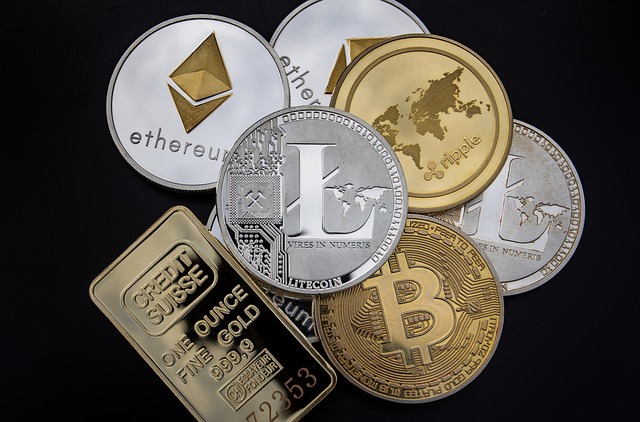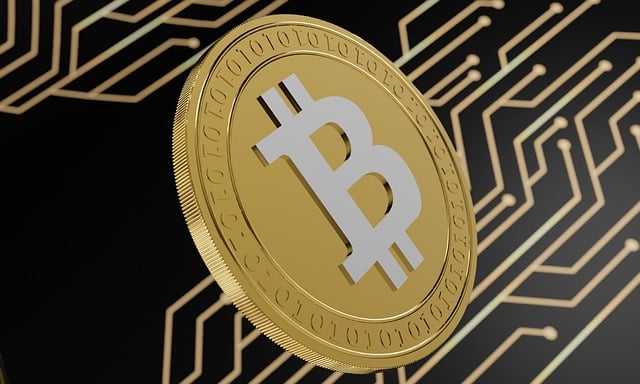
Bitcoin mining has evolved dramatically since its early days, transitioning from a personal computer hobby to a competitive industry dominated by powerful Application-Specific Integrated Circuits (ASICs). These specialized chips significantly boost efficiency in solving complex algorithms, enhancing network security and scalability. While ASICs have driven accessibility and innovation, environmental concerns around energy consumption are prompting the exploration of eco-friendly alternatives. Technologies like GPUs, FPGAs, off-chain solutions, and proof-of-stake consensus mechanisms aim to democratize mining, streamline transactions, and reduce Bitcoin's carbon footprint.
“Bitcoin mining has undergone a remarkable evolution since its early days. This article explores the transformative journey, from manual processes to the current state dominated by Application-Specific Integrated Circuits (ASICs). We delve into how ASICs revolutionized efficiency and competition, leading to the proliferation of specialized hardware. Furthermore, we examine alternative mining methods and glimpse into the future, considering off-chain solutions, decentralization, and environmental sustainability in the context of Bitcoin’s ever-evolving ecosystem.”
- The Early Days of Bitcoin Mining: A Glimpse into the Past
- Introduction of Application-Specific Integrated Circuits (ASICs)
- ASICs: Revolutionizing Bitcoin Mining Efficiency and Competition
- The Rise of Specialized Mining Hardware and its Impact
- Exploring Alternative Mining Methods: GPU, FPGA, and Beyond
- The Future of Bitcoin Mining: Off-Chain Solutions and Decentralization
- Environmental Considerations and the Sustainability of ASIC Mining
The Early Days of Bitcoin Mining: A Glimpse into the Past

In the nascent days of Bitcoin, mining was a relatively simple endeavor, driven primarily by passion and curiosity. Early enthusiasts used their personal computers to solve complex mathematical puzzles, a process that required significant computational power and time. These early miners, often operating from their home computers, were rewarded with bitcoins for their efforts, serving as an early incentive mechanism within the network. The mining landscape was characterized by diversity, with various hardware options ranging from CPU-based setups to dedicated GPU cards.
As Bitcoin’s popularity grew, so did the network’s computational demands. This evolution led to a pivotal shift in mining technology, paving the way for Application-Specific Integrated Circuits (ASICs). ASICs, designed specifically for Bitcoin mining, offered a massive performance advantage over their general-purpose predecessors, allowing miners to solve puzzles much faster. This innovation marked a turning point, transforming Bitcoin mining from a hobbyist pursuit into a more specialized and competitive industry, as powerful ASIC rigs began dominating the mining landscape.
Introduction of Application-Specific Integrated Circuits (ASICs)

The introduction of Application-Specific Integrated Circuits (ASICs) marked a significant turning point in the world of Bitcoin mining, revolutionizing the way digital currencies are extracted and validated. These powerful chips were designed with a singular purpose: to perform the complex mathematical calculations required for Bitcoin mining more efficiently than traditional general-purpose processors. With their specialized architecture, ASICs offer unparalleled speed and energy efficiency, making them the dominant force in the mining landscape.
ASIC technology has evolved rapidly since its inception, driving down the cost of mining operations and increasing accessibility for enthusiasts worldwide. The development of more advanced ASICs has not only boosted mining capacity but also created a vibrant ecosystem of hardware manufacturers competing to deliver the most cutting-edge solutions. This continuous innovation ensures that Bitcoin remains secure, with each new generation of ASICs enhancing the network’s overall resilience against potential attacks.
ASICs: Revolutionizing Bitcoin Mining Efficiency and Competition

ASICs, or Application-Specific Integrated Circuits, have been a game-changer in the world of Bitcoin mining. These specialized devices were introduced to meet the growing demand for more efficient and powerful hardware capable of solving the complex mathematical problems required to mine Bitcoin blocks. Unlike general-purpose CPUs or GPUs, ASICs are designed explicitly for cryptocurrency mining, making them incredibly efficient at performing the specific tasks needed.
This innovation has significantly revolutionized Bitcoin mining by enhancing efficiency and intensifying competition. ASICs offer a vast performance advantage over traditional computing hardware, allowing miners to solve more complex algorithms faster. As a result, they have led to a competitive landscape where specialized mining farms, equipped with these advanced circuits, dominate the market. The rise of ASICs has made Bitcoin mining more accessible but also pushed the industry towards consolidation, with large-scale operations becoming the norm.
The Rise of Specialized Mining Hardware and its Impact

The evolution of Bitcoin mining hardware has been a game-changer in the cryptocurrency space, leading to an intense focus on specialized mining equipment. The introduction of Application-Specific Integrated Circuits (ASICs) marked a significant turning point, revolutionizing the efficiency and profitability of bitcoin mining operations. These advanced chips are designed solely for the purpose of solving complex mathematical problems required to validate blockchain transactions, making them vastly superior to general-purpose CPUs or GPUs.
The rise of specialized mining hardware has had a profound impact on the Bitcoin network. It has led to increased mining difficulty, ensuring the security and integrity of the blockchain. Efficient ASICs have enabled miners to process more transactions per second, facilitating faster confirmations and enhancing the overall scalability of Bitcoin. This evolution has also created a dynamic market where specialized hardware manufacturers compete to offer cutting-edge solutions, driving innovation and reducing costs for both individual miners and mining pools.
Exploring Alternative Mining Methods: GPU, FPGA, and Beyond

In the ever-evolving landscape of Bitcoin mining, the search for more efficient and accessible methods has led to the exploration of alternative technologies beyond Application-Specific Integrated Circuits (ASICs). Graphical Processing Units (GPUs) have emerged as a popular choice due to their parallel processing capabilities, allowing miners to harness the power of multiple cores simultaneously. This makes GPUs particularly well-suited for the complex mathematical calculations required in Bitcoin mining.
Furthermore, Field-Programmable Gate Arrays (FPGAs) offer another promising avenue. With their reconfigurability, FPGAs can be optimized for specific mining tasks, providing flexibility and potential performance gains. As the Bitcoin network continues to grow, these alternative methods could play a significant role in democratizing access to mining, offering more options for participants worldwide to contribute to the decentralized nature of this groundbreaking cryptocurrency.
The Future of Bitcoin Mining: Off-Chain Solutions and Decentralization

The future of Bitcoin mining lies in exploring off-chain solutions and maintaining decentralization, two concepts that could significantly reshape the industry. Off-chain processing, such as Lightning Network, enables faster and cheaper transactions by moving them outside the main blockchain. This not only reduces the burden on miners but also opens up opportunities for a more scalable and accessible Bitcoin ecosystem. Decentralization, a core principle of Bitcoin, ensures that no single entity controls the network. Innovations like proof-of-stake (PoS) consensus mechanisms offer an alternative to energy-intensive mining, potentially making Bitcoin more environmentally friendly and accessible to a broader range of participants.
These developments suggest a future where Bitcoin mining is not solely focused on raw computing power but on enhancing user experience and fostering the network’s longevity. As technology evolves, miners will need to adapt to these changes, ensuring that Bitcoin remains secure, efficient, and inclusive for its growing global user base.
Environmental Considerations and the Sustainability of ASIC Mining

Bitcoin mining, driven by specialized hardware like ASICs (Application-Specific Integrated Circuits), has evolved significantly over time. However, alongside these innovations, there’s a growing concern about the environmental impact, particularly in terms of energy consumption and carbon footprint. ASIC miners, while highly efficient at solving complex mathematical problems, require substantial electrical power to operate, leading to increased greenhouse gas emissions.
The quest for sustainability in Bitcoin mining is gaining traction, pushing the industry towards more eco-friendly alternatives. This shift includes exploring renewable energy sources to power mining operations and developing more energy-efficient ASIC designs. As the Bitcoin ecosystem evolves, addressing these environmental considerations is crucial not just for the long-term viability of the network but also for the planet’s overall health.
As we look towards the future of Bitcoin mining, it’s evident that technological advancements, particularly in application-specific integrated circuits (ASICs) and specialized hardware, have significantly shaped the landscape. While ASICs revolutionized efficiency and competition, the increasing specialization has also led to environmental concerns. Exploring alternative methods like GPUs and FPGAs offers potential sustainable solutions. Off-chain technologies promise further enhancements, aiming to maintain Bitcoin’s core principles of decentralization while addressing current challenges. This ongoing evolution underscores the dynamic nature of the bitcoin ecosystem, continually pushing the boundaries of what’s possible in digital currency mining.






